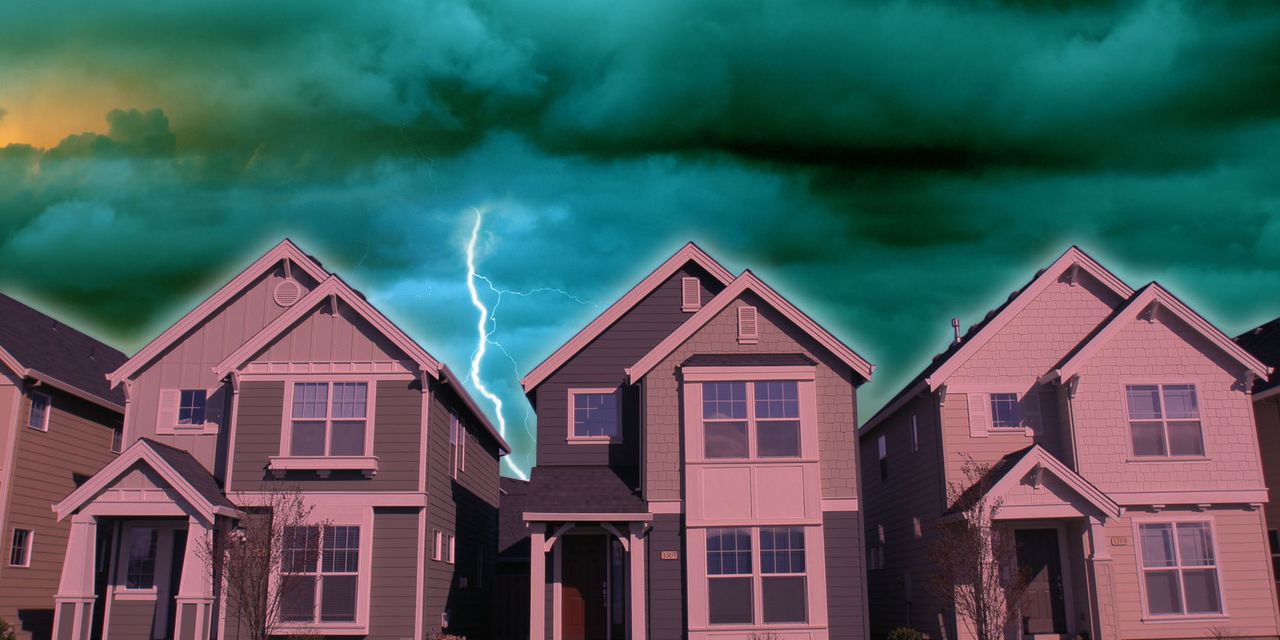: After 2 stormy years of ‘moonshot’ house prices, don’t hold out hope for a major correction. Why COVID-era property values may be here to stay.

There is hope for first-time buyers looking to enter the U.S. housing market, but observers say they will have to be patient.
After a two-year surge in home prices during the COVID-19 pandemic, the housing market is finally showing signs of cooling — in terms of demand and sales, if not those persistently high prices — partly due to rising interest rates, high prices due to a shortage of quality inventory, inflation impacting the cost of raw materials, and a volatile stock market. Sales of new homes fell in April for the fourth month in a row, to the lowest level since the pandemic began.
Affordability still remains a challenge. The median sales price of houses was $428,700 in the first quarter of 2022, up 30% from $329,000 in the first quarter of 2020. Mortgage rates jumped from 2.75% in the fall for a 30-year fixed to over 5.25%. Redfin RDFN estimates that 8.2% of homes are valued at $1 million or higher, equivalent to 6 million properties, up from 3.5 million homes, or 4.8% of the nation’s housing stock, two years earlier.
Pandemic-era prices, as they currently stand, may be here to stay. “It is entirely possible that prices level out and just don’t change very much for the next few years,” said Greg McBride, chief financial analyst at personal-finance site Bankrate.com. “This would benefit first-time buyers by allowing their incomes to ‘catch-up’ to the cost of homeownership somewhat, but this would unfold over a 2- to 4-year period, not the next 2 to 4 months.”
“House prices have been on a tear. The median sales price of houses was $428,700 in the first quarter of 2022, up 30% from $329,000 in the first quarter of 2020.”
McBride cautioned would-be buyers who hope for a significant price correction. “Sellers have been putting homes on the market and asking for moonshot prices,” he said. “In a neighborhood where homes were selling for $600,000 one year ago, a seller may now be asking $800,000. Sure, they may need to cut the price a bit and eventually sell for say, $725,000, but that is still much higher than the $600,000 it would’ve sold for one year ago.”
Just 6% of homeowners said their homes decreased in value last year, according to a poll of 1,000 adults by YouGov. Realtor.com last month detailed median house-price drops, which were small by the Great Recession standards. Those declines were happening in arguably already challenging pockets around the U.S. Among the biggest drops were Toledo, Ohio (down 18.7% since 2021), Rochester, N.Y. (down 17%) and Detroit, Mich. (down 15.4%).
(Realtor.com is operated by News Corp subsidiary Move Inc., and MarketWatch is a unit of Dow Jones, also a subsidiary of News Corp. NWSA, +1.45%. )
That’s not to say there are not significant risks of a correction, particularly as the Federal Reserve attempts a high-wire act of raising interest rates without pushing the economy into a recession. Of course, there is no clear consensus of how long or severe any recession would be. As Greg Handler, head of mortgage and consumer credit at Western Asset Management, told MarketWatch: “Can you actually see a correction, or an overcorrection? I think there’s obviously some risk of that.”
“Just 6% of homeowners said their homes fell in value last year, and many of those declines arguably happened in already challenging real-estate markets.”
More than half (58%) of Americans said they own a home, and nearly 30% reported that they actually own their home outright, YouGov’s poll also found. (U.S. Census Bureau five-year estimates, published in 2020, found a slightly higher share (38%) of owner-occupied units own their home free and clear.) “As for those that have paid off their mortgages already, that’s neither here nor there as it pertains to new buyers looking to enter the market,” McBride added.
The share of homeowners who own their home free and clear is due to the higher number of older Generation X and baby boomers who own homes compared to millennials and Generation Z. The millennial homeownership rate of 43% was well below the national average of 65%, as of 2019, per estimates compiled by Freddie Mac FMCC, +0.01%, citing “delayed marriage, financial challenges of racial and ethnic minorities, less financial security and higher debt.”
But more opportunities for home-ownership for first-time buyers await, even if it takes several years. “Rising home prices and a record-low inventory of affordable housing for sale have also impeded homeownership,” a Freddie Mac report on millennial homeownership released last year found. “On the other hand, as more millennials reach age 40, their household formation rate will accelerate due to higher marriage rates and more stable incomes.”
The Dow Jones Industrial Index DJIA, +1.51%, S&P 500 SPX, +1.72% and Nasdaq Composite COMP, +2.15% clung to positive territory Wednesday after the U.S. Federal Reserve minutes signaled flexibility on interest-rate hikes.

Comments are closed.